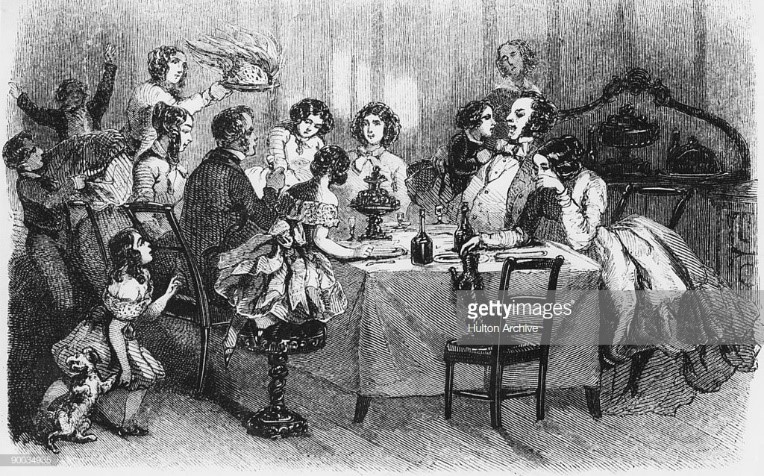
Kelly Harper, BA History student and Student Experience Ambassador for the School of History and Cultures, maps out the Empire Christmas Pudding.
The Christmas pudding, we all know, and love has had an interesting but controversial past starting off as a porridge and becoming a high-profile symbol of imperialism. On the 25th of December, we’ll all be tucking into our Christmas pudding after being stuffed with turkey, but the Christmas pudding didn’t start off being associated with Christmas at all.
Origin
Originating in the 14th century as a porridge called ‘frumenty,’ the Christmas pudding was made of beef and mutton. However, by 1595 with British involvement in the spice trade, frumenty gradually changed, being thickened with spices, eggs, and dried fruit; becoming a plum pudding. With dried fruit plentiful in Britain, the plum pudding made the transition from a savoury to a sweet pudding.[1]

Figure 1: http://blog.english-heritage.org.uk/a-history-of-the-christmas-pudding/
It is not known when exactly the plum pudding became associated with Christmas, however, with the establishment of the Church and the break from Rome under Henry VIII, Christmas increasingly gained a national ‘English’ character. Because of this relationship, it is assumed that Cromwell banned plum pudding in the mid-1600s along with Yule logs, carol singing and nativity scenes. But, by 1660 the Puritans were deposed and the English monarchy, along with the Christmas pudding returned.[2] However, there is no evidence to suggest this. Instead, the earliest reference that firmly established plum pudding with Christmas is the diary of Henry Teonge, a British naval chaplain. Onboard His Majesty’s Ship Assistance, he wrote in his journal on Christmas Day 1675.

Having tasted and enjoyed Plum Pudding King George I firmly established the pudding in Britain in 1714 and by Victorian times, the pudding became a staple part of the Christmas family meal, noted in figure 2.

Figure 2: ‘Blazing Plum Pudding’, (Getty images, January 1860)
Symbol of Imperialism
By the interwar period, a key turning point in globalization, the pudding was “a symbol of the unity of Empire, and an example to be copied in every household throughout the length and breadth of the British Empire” often promoted through the media.[3] The Empire marketing board created a film in which a London schoolboy dreams he visits Buckingham Palace, where he makes the King’s Christmas pudding from the ingredients collected from the different parts of the British Empire.[4]

Figure 3: 'The Empire Christmas Pudding' by F. C. Harrison, (December 1928)
Although often observed as a quintessential British pudding, it is a political symbol of imperialism, O’ Connor labels it as a “gastronomic paradox: the most English of dishes made from the most un-English ingredients” as shown in figure 3.[5] The Empire Christmas pudding emerged in the 1920s and aimed to promote the usage of ingredients from countries throughout the British empire.
Consequently, the pudding has created a debate as to what nationality and national identity mean in the modern world.
[1] https://www.history.com/news/the-holiday-history-of-christmas-pudding [2] Kaori O’Connor, The King's Christmas pudding: globalization, recipes, and the commodities of empire, in Journal of Global History. Volume 4, Issue 01. March 2009, pp 127 -155 [3] The Times, 2/12/1927, p. 11, col. C [4] http://www.colonialfilm.org.uk/node/40 [5] Kaori O’Connor, The King's Christmas pudding: globalization, recipes, and the commodities of empire, in Journal of Global History. Volume 4, Issue 01. March 2009, pp 127 -155
